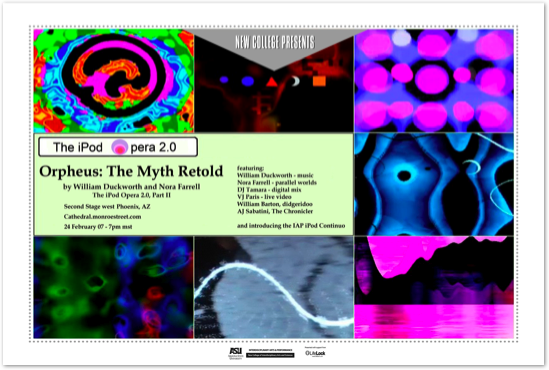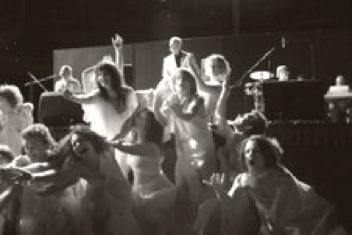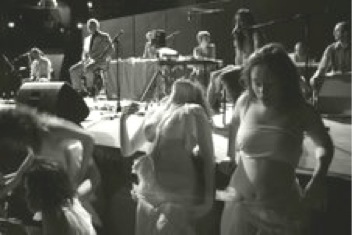
These images from above are from IOrpheus: An iPod Opera. This was a large scale performance created and developed by William Duckworth and Nora Farrell in collaboration with musicians, dancers, and others in Brisbane, Australia in August, 2007. AJ Sabatini is The Chronicler. The entire iOrpheus Project evolved over three years..
In 2005 Bill Duckworth and Nora Farrell planned to commemorate the 500th anniversary of the performance of what is regarded as the first opera, Claudio Monteverdi’s Orfeo. Through 2006, a series of 24 podcasts went on-line and a performance piece titled iOrpheus: The Myth Retold (an iPod Opera) took place in Phoenix, Arizona with the Cathedral Band on February 24, 2007, the exact date of the premiere of Orfeo. This was a prelude to a large scale day-long outdoor interactive, processional performance in Brisbane, Australia, August, 2007 (pictured above). Lasting for over three hours in a public park along the river, the performance included dancers, various ensembles playing operatic versions of Orpheus, Butoh and ballet dancers, and sound/space installations, and amplified cell phone and iPod choruses. The Chronicler, of course, was at Orpheus and Eurydice’s wedding and he followed Orpheus through his descent into the underworld and travels on Earth until he was torn apart by Thracian women his head tossed into the sea. In a 2014 article titled, “Orpheus and Eurydice in Performance in the 21st Century,” published after an Istanbul Conference, Myths Revisited, I reviewed iOrpheus and other contemporary versions of the myth.
(Images in the poster below are taken from the remarkable videoes by VJ Paris in the 26 podcasts)

Overall, iOrpheus was an example of practice and performance that combined digital accessibility and interactivity with a variety of live performances situations. The project implied a concept of mythic transmission in the sense that it combined narrative and musical experience that offered audiences long term, developmental participation in music as a sonic narrative or continuous performance. In this model, virtual and live performance augmented, advanced and modified each other by taking up visual, thematic and interactive of the musical material so that it did not fully exist is either one form or another.
(Podcast. “We Talked for Hours”)





